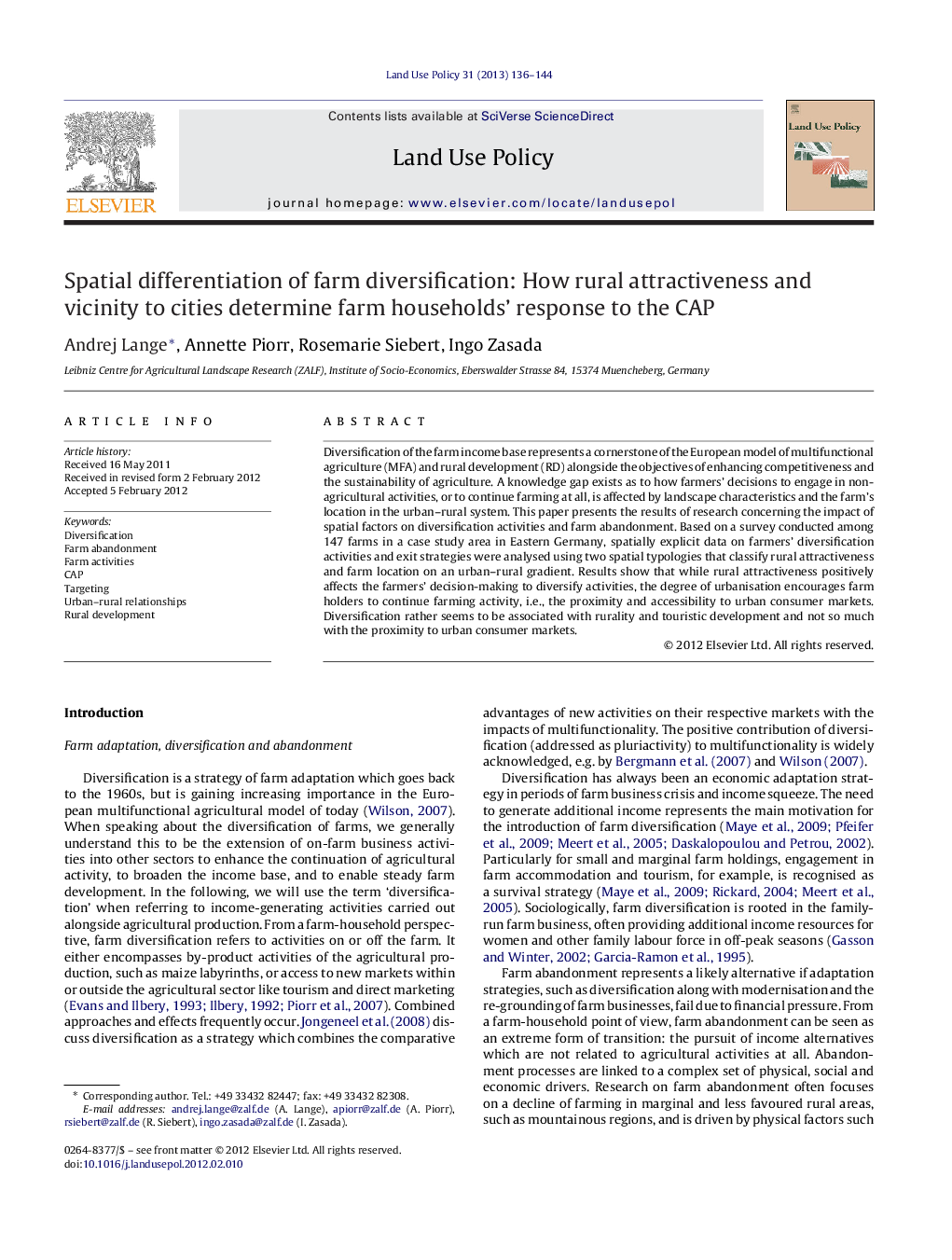| کد مقاله | کد نشریه | سال انتشار | مقاله انگلیسی | نسخه تمام متن |
|---|---|---|---|---|
| 93072 | 160112 | 2013 | 9 صفحه PDF | دانلود رایگان |
Diversification of the farm income base represents a cornerstone of the European model of multifunctional agriculture (MFA) and rural development (RD) alongside the objectives of enhancing competitiveness and the sustainability of agriculture. A knowledge gap exists as to how farmers’ decisions to engage in non-agricultural activities, or to continue farming at all, is affected by landscape characteristics and the farm's location in the urban–rural system. This paper presents the results of research concerning the impact of spatial factors on diversification activities and farm abandonment. Based on a survey conducted among 147 farms in a case study area in Eastern Germany, spatially explicit data on farmers’ diversification activities and exit strategies were analysed using two spatial typologies that classify rural attractiveness and farm location on an urban–rural gradient. Results show that while rural attractiveness positively affects the farmers’ decision-making to diversify activities, the degree of urbanisation encourages farm holders to continue farming activity, i.e., the proximity and accessibility to urban consumer markets. Diversification rather seems to be associated with rurality and touristic development and not so much with the proximity to urban consumer markets.
► We apply two typologies for spatial differentiation of farm locations.
► We examine farm survey responses on diversification and farm abandonment under different CAP scenarios.
► Rural attractiveness and vicinity to cities correlate with diversification uptake and farm continuation.
► Targeting of CAP and rural development measures need to better reflect target areas and target groups.
Journal: Land Use Policy - Volume 31, March 2013, Pages 136–144
